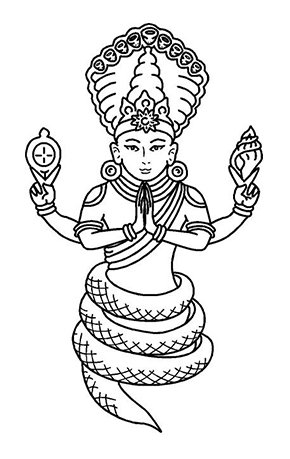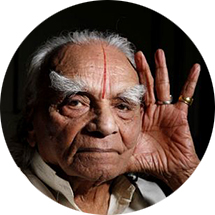Yoga – We just ॐ it
Well, if you are here you probably know what Yoga is. For our peace of mind though, we will add a few words. Just in case.
The meaning of the word Yoga in Sanskrit (The ancient Indian language) is one, union. When we practice Yoga we become one with nature, one with God. Yoga is the means by which the mind becomes still and quiet. When the mind is kept quiet for a long time (Dhyana) the practitioner becomes one with God.
Yoga is an ancient science; however, its exact origins are unknown. Many Indian legends speak about sages and warriors practicing Yoga, but Lord Shiva is described as the first great Yogi. Sage Patanjali was the first person to present the Yoga methodology in writing.
Around 200 B.C a beautiful pious lady named Gonika prayed for a son while bathing in the river. The Sun-God asked the wise snake Ananta (AKA Shesa) to be reborn as Gonika’s son. Ananta dropped instantly into Gonika’s praying hands changing his form from a tiny snake into a baby boy. The delighted Gonika named the little baby Patanjali – Pata means falling and Anjali means offering, or palms folded in prayer, both in Sanskrit.
Patanjali grew up to become a wise and educated man known for his wisdom. He was an author, a Sanskrit grammar expert, an Ayurvedic doctor and a Yogi. He wrote The Yoga Sutra of Patanjali, which is the first and most important book ever written about Yoga. In a mere 196 sayings he explained what Yoga is. The Yoga Sutra is still a must have book in every reading list of any Yoga teacher training.
In The Yoga Sutra of Patanjali, Yoga is divided to 8 limbs (the word Ashtanga in Sanskrit means 8). The limbs are often compared to a tree.
1. YAMA – the Yamas are the universal commandments, commandments between a human being to its fellow humans.
AHIMSHA – non violence
SATYA – truth
ASTEYA – no stealing
BRAHAMACHARYA – self control
APARIGRAHA – unselfishness
The Yamas are parallel to the roots of the tree.
2. NIYAMA – the Niyamas are the personal commandments, commandments between a human being to himself.
SAUCHA – cleanliness
SANTOSHA – contentment
TAPAS – great effort
SVADHYAYA – self study
ISHVARA PRANDINDHANA – faith
The Niyamas are parallel to the trunk of the tree.
3. ASANA – Postures. Many Yoga postures’ names end with the word ‘asana’. This is the part of Yoga most practiced today in studios around the globe.
Asana is parallel to the branches of the tree.
4. PRANAYAMA – Pranayama means breath control. Pranayama is also very common in the western world today and practiced widely. Some of the most known one are Ujjayi, Viloma Anuloma and Pratiloma, Nadi Sodhana and Surya and Chandra Bhedana.
Pranayama is parallel to the leaves of the tree.
5. PRATYAHARA – Pratyahara means control of the five senses, learning to withdraw the senses towards the inside of the body and quieting the senses and information deriving from it.
Pratyahara is parallel to the bark of the tree (the inner part of the trunk).
6. DHARANA – Dharana means deep concentration and it is parallel to the sap of the tree (the fluid which circulates through the tree).
7. DHYANA – Dhyana means meditation and is parallel to the flowers of the tree.
8. SAMADHI – Samadhi is the goal of Yoga and it is the union with God. Samadhi is parallel to the fruit of the tree and does not belong to the Yogi. The Yogi is committed to the effort to the learning to the process. The fruit of the process belongs to God.
We would like to take this opportunity to thank all the teachers and Yoga teachers whose lives crossed with ours, that helped us reach and partially understand this amazing source of information and fountain of peace, and to mention it is not even the tip of the iceberg.




